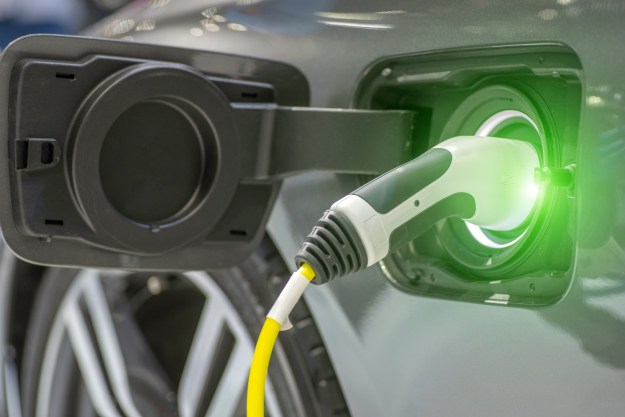Mercedes-Benz is going all-in on electric cars, but it’s not abandoning performance. Launching in the U.S. in early 2023, the Mercedes-AMG EQE 53 4Matic+ (or AMG EQE for short) sedan is the second EV from Mercedes’ AMG performance division.
As with most AMG models, this four-door EV is a tuned version of an existing Mercedes, in this case the EQE sedan. Unveiled in September 2021, the EQE slots below the larger EQS sedan in Mercedes’ growing EV lineup. The AMG version gets its own powertrain and numerous other hardware changes, plus subtle model-specific styling features.
The transformation starts with a pair of AMG-specific motors. One powers each axle, giving the AMG EQE all-wheel drive. Together, they produce 617 horsepower and 701 pound-feet of torque, or 677 hp and 738 lb-ft of torque with the optional AMG Dynamic Plus Package. Either way, that’s a lot more than the base rear-wheel drive EQE, which only gets 288 hp and 391 lb-ft from its single motor.
Mercedes says the AMG EQE will do zero to 60 mph in 3.4 seconds (3.2 seconds with the AMG Dynamic Plus Package), but that requires a 70% state of charge. Top speed is 137 mph (149 mph with the AMG Dynamic Plus Package). That velocity won’t be accompanied by the growl of AMG’s traditional V8 engine, so engineers devised a number of driver-selectable sounds projected by dedicated speakers, a bass actuator, and sound generator.

Like the standard EQE, the AMG model’s battery pack has 90.6 kilowatt-hours of usable capacity. That should translate to 275 miles to 321 miles of range on the European WLTP testing cycle, according to Mercedes. U.S. range ratings will be available closer to the car’s launch there, the automaker noted. The AMG EQE will also be equipped for DC fast charging at 170 kilowatts, which should replenish that big battery pack fairly quickly.
Other upgrades include an AMG-specific air suspension system and braking. The latter combines robust mechanical brakes, including 16.3-inch rotors and six-piston calipers upfront,and 14.9-inch rotors and single-piston calipers in back (larger rotors are available with the optional 21-inch wheels), with the regenerative braking technology common to all EVs. AMG Dynamic Select drive modes can vary power output from 100% in Sport+ mode to 50% in Slippery mode, while the AMG Dynamic Plus Package adds a “boost” function for the quickest possible acceleration.
AMG-specific styling elements include a new grille, front bumper, and rear spoiler, plus additional black trim. On the inside, the AMG EQE gets a model-specific steering wheel and seats, the latter available with Nappa leather upholstery. Like the standard EQE, the AMG version can be equipped with Mercedes’ Hyperscreen, which combines a digital instrument cluster and two touchscreens into one dashboard-spanning display.
Mercedes has many EVs in the pipeline. An AMG version of the EQS sedan is on the way, along with SUV versions of both the EQS and EQE, and a smaller electric SUV called the EQB. The automaker aims to go all-electric in at least some markets by 2030.
Editors' Recommendations
- Mercedes G580 electrifies an off-road icon
- Audi Q6 e-tron ushers in the automaker’s next EV phase
- Mercedes’ electric eSprinter isn’t just greener, it’s better
- How do you crash-test an EV with an 871-pound battery? Mercedes showed us
- Acura’s resurrected ZDX SUV is an EV shortcut


